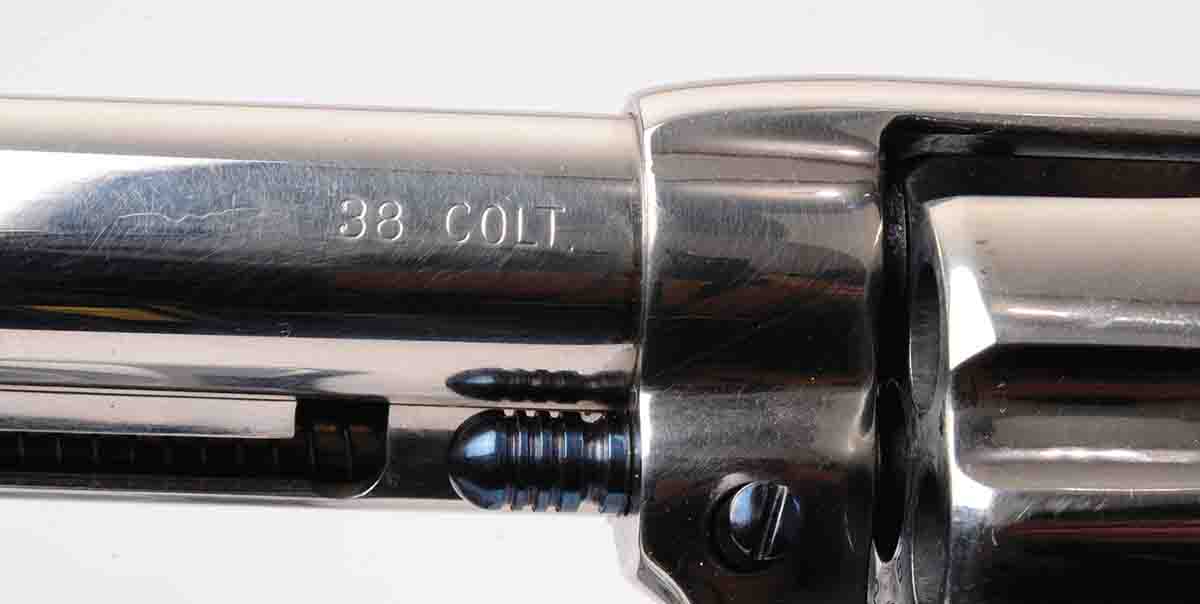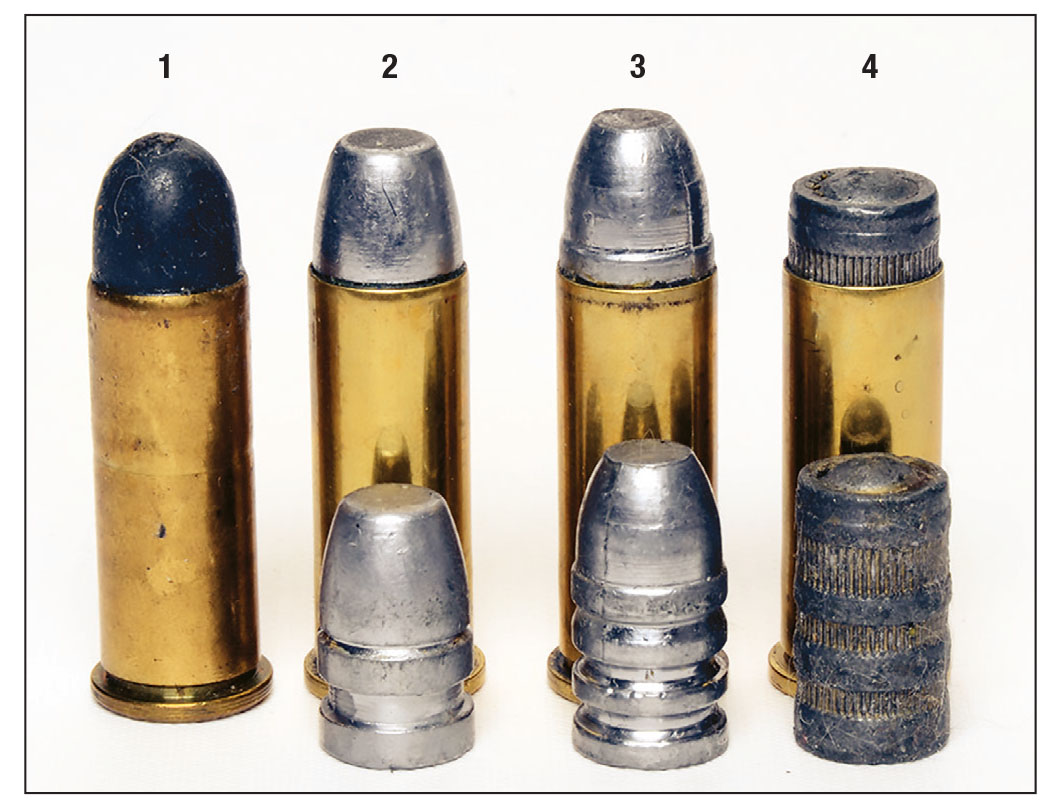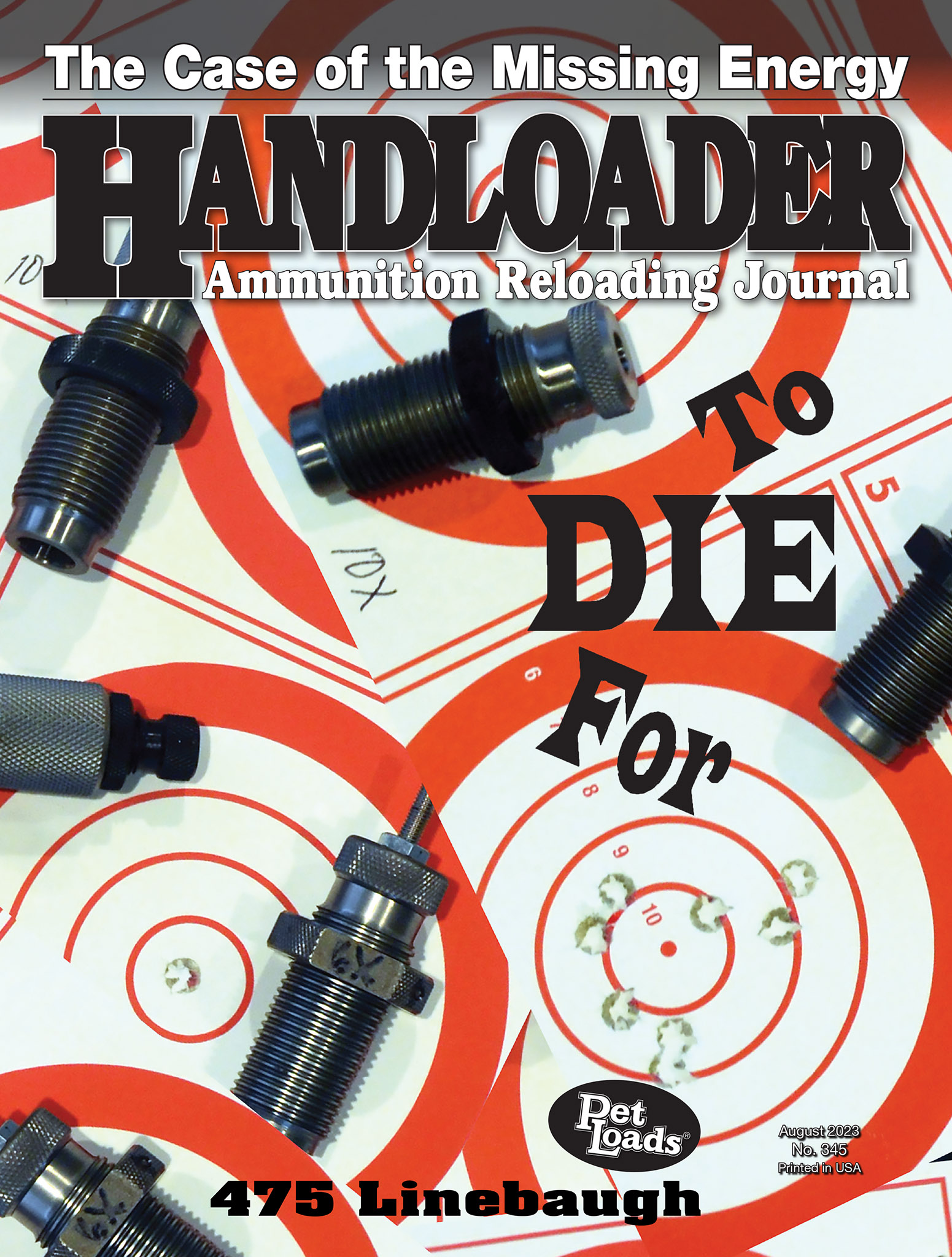Mike’s Shootin’ Shack
Mike’s Shootin’ Shack - Mike Venturino
column By: Mike Venturino - Photos by Yvonne Venturino | August, 23

The gap in my Colt SAA collection was for a 38 (Long) Colt. Now that alone can be confusing as Colt cataloged two variations of 38 Colts. (No SAAs were labeled 38 Long Colt. All were simply marked 38 Colts.) From about 1886 to 1914, Colt produced SAAs for that cartridge with .370/375-inch barrel groove diameters, as was normal in all of its 38 Colt revolvers at that time. That situation came about because the earliest 38 Colt revolvers were conversions of Colt Models 1851 and 1861 .36-caliber cap and ball revolvers for which .375-inch balls were recommended.

Early 38 Long Colt factory loads used heel-base, outside-lubed bullets, whose diameter was large enough for early, large-groove diameter barrels. Eventually, ammunition manufacturers realized that grease-groove bullets were better fitting them in 38 Colt cases and necessitated reducing bullet diameters to approximately .357 inch. For them to expand and grip rifling, 38 Colt bullets had to be soft and hollowbase. Surprisingly, that system worked well. I’ve had several 38 Colt sixguns with early, large-groove diameter barrels that shot very well with soft hollowbase .357- or .358-inch bullets.
Ideally, I wanted a 38 Colt SAA from the early 1884-1912 production. Why? For me, the challenge of handloading older revolver cartridges is interesting and educational. As a rule, they need more than the normal (modern) handloading processes for accurate shooting results.
Without doubt, I peruse internet sites selling or auctioning firearms far more than my wallet says I should. One day, up popped a handsome SAA 38 Colt with a 5½-inch barrel. By its serial number, manufacture had been in 1899; just where I wanted my 38 Colt to date from. It had been renickeled because no 120-year-old SAA remains in such fine condition. That bothered me not one whit. Someone had done an expert job – perhaps it was even the Colt factory.
Opening the delivery box, I was pleased when viewing my new acquisition. Cocking its hammer also pleased me as its action had obviously been smoothed. What wasn’t pleasing was that after the first shot, its cylinder locked up so tight, I had to remove it to free the firing pin. Obviously, the firing pin hole had been wallowed out a bit, allowing primer flow back. More disappointment followed when the bore was slugged. It was .354 inch across its grooves and not the .370-inch-plus diameter hoped for. That barrel obviously came from the 1922-1931 production.
Discussing my problem with Gunsmith Bill Fuchs (of Spring Creek Armory in Ten Sleep, Wyoming), he said, “Send it on down. I can fix the firing-pin hole.” While there, I prevailed on him to also fit a set of one-piece-style grips of fancy Rosewood.

My head was still buzzing with Bill’s news when my letter arrived from the Colt Archive researchers. It indeed left the factory in 1899, but as a 38-40 with a 7½-inch barrel! Plus, it had been shipped as having blue with a color-case hardened frame for the original finish. This very nice looking and somewhat expensive SAA was a parts gun, albeit a very nicely done one. By the way, it was also discovered that its cylinder is actually chambered for 357 Magnum as denoted by its M prefix to its non-matching serial number. (SAAs from 1886-1914 production have chambers bored straight through.) Returning the Colt to the seller wasn’t an option as I bought it “AS IS; NO RETURN.” Not very smart on my part, but not the first time my impetuous nature has served me up a lemon.
So this is when I decided to make lemonade. Several hundred 38 Colt handloads were assembled using a variety of .358-inch, solid and hollow-base bullets, coupled with a small assortment of pistol powders. Hollowbase bullets were included because in decades past, I had made a 38 Colt conversion based on a Model 1861 Second Generation percussion revolver as sold by Colt circa the late 1970s or early 1980s. It has the original oversize barrel, necessitating hollowbase bullets. I wanted some loads that were usable in both revolvers.
My lemonade turned out quite well. My favorite load for the Model 1861 conversion uses Speer’s 148- grain, swaged wadcutter over 3 grains of Bullseye for a velocity of 734 feet per second (fps) from its 7½-inch barrel. From the 5½-inch SAA barrel, velocity was 714 fps. Accuracy from both guns is very good and the SAA even prints that load to its sights at 25 yards. The accompanying load table shows the results of other loads using solid bullets meant only for the SAA. My misadventure in buying this 38 Colt sight unseen didn’t turn out exactly as hoped, but still, I ended up with a fine shooting and very attractive addition to my SAA collection.
.jpg)


